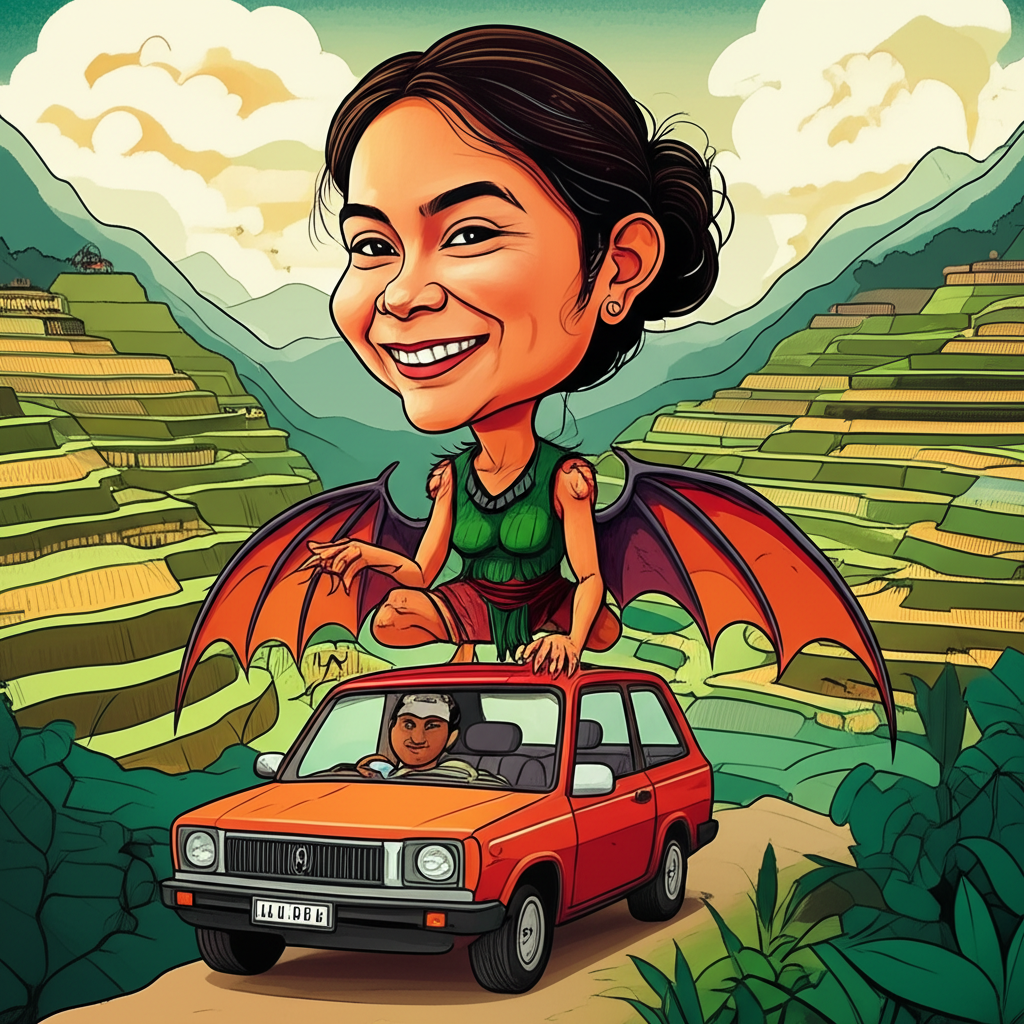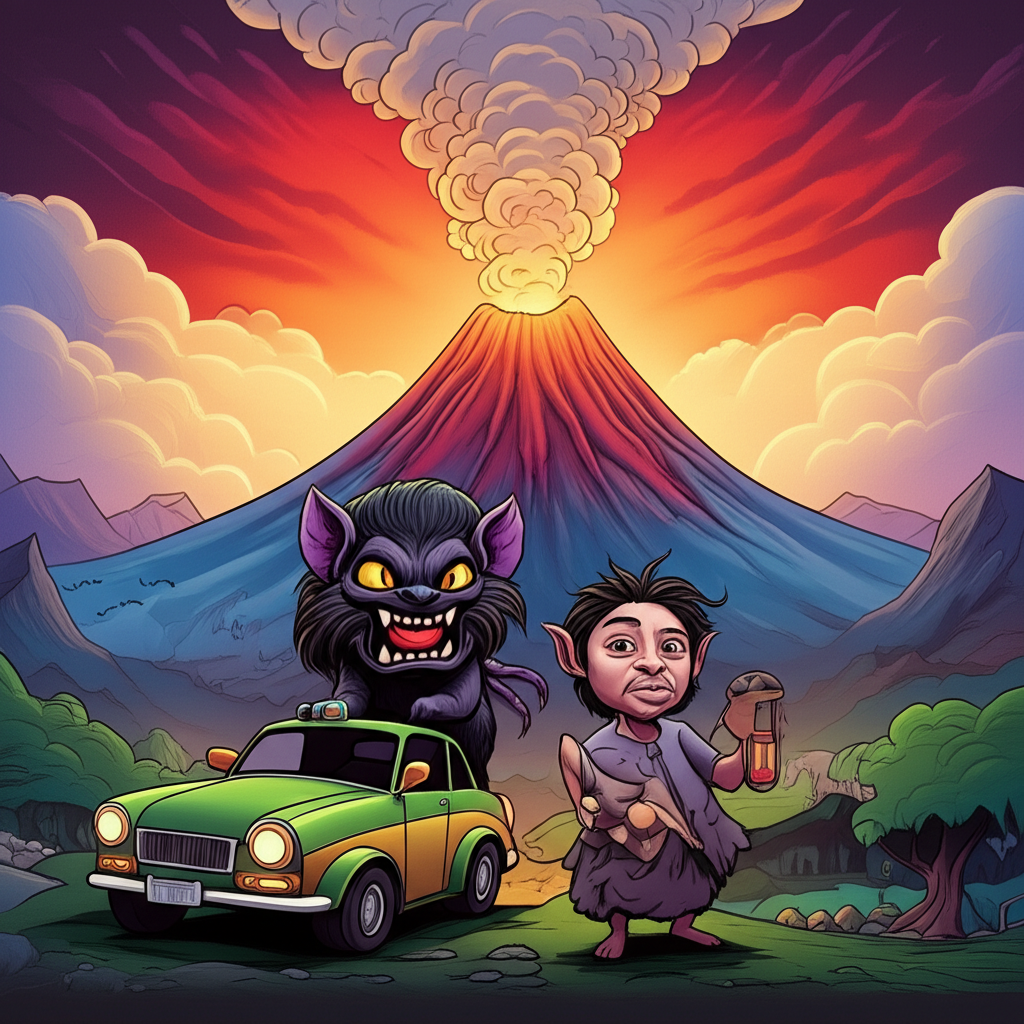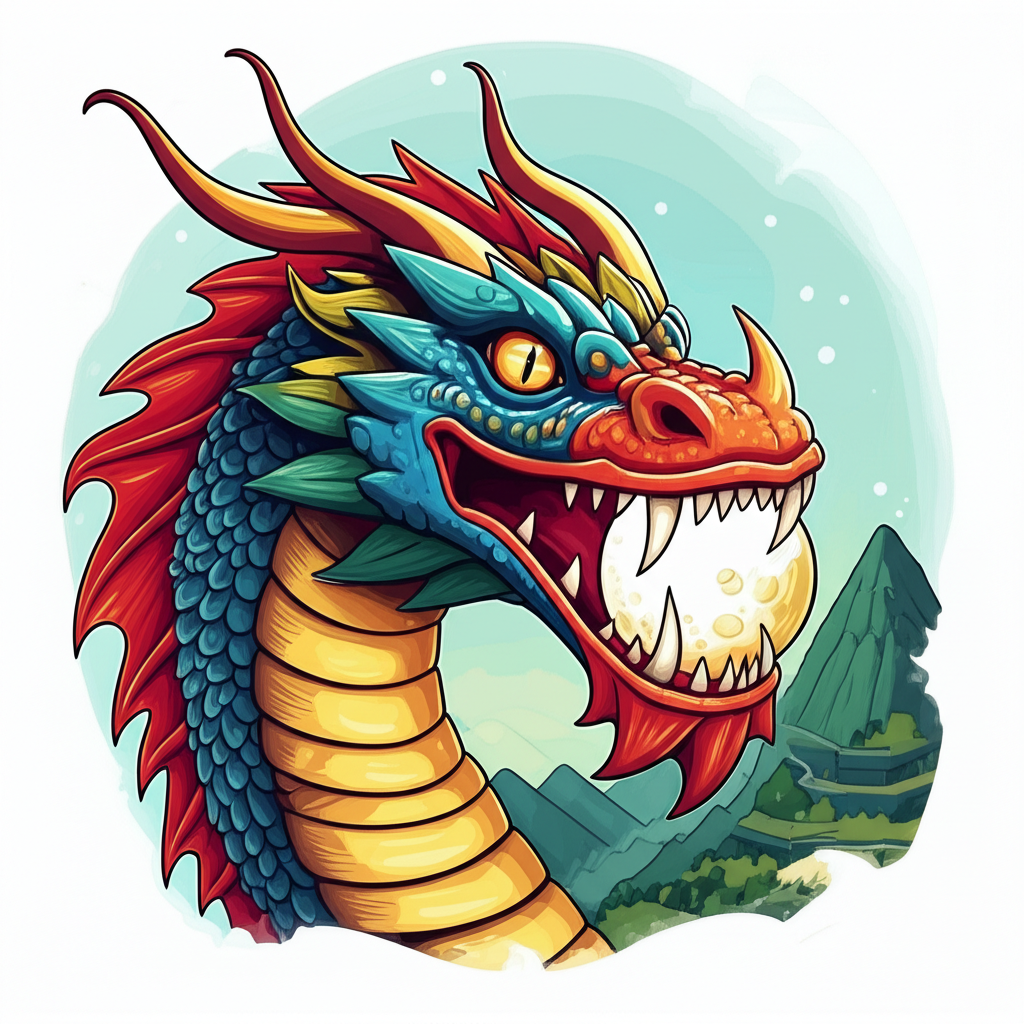
The mist, thick as the breath of ancient spirits, often clings to the emerald tapestry of the Ifugao Rice Terraces. These monumental staircases carved into the very bones of the Cordillera mountains are a testament to human ingenuity, a breathtaking landscape shaped by millennia of diligent labor. Yet, within the cultural memory of the Philippines, particularly in the northern regions, these magnificent structures can sometimes serve as a backdrop for stories whispered in the fading light – tales of beings that tread the boundary between the mundane and the mystical. Among these, the legend of the Manananggal, a creature of profound duality, finds a haunting resonance, its echoes seemingly woven into the very fabric of the landscape and the anxieties of the people who shaped it.
This is not a chronicle of divine decree or empirical fact, but a journey into the realm of traditional stories, passed down through generations by ancient peoples. These narratives, born from a time when the world was perceived as a place imbued with potent spirits and unseen forces, offer a window into the worldview of societies that sought to understand and navigate the mysteries of existence.
A World Woven with Spirits: The Context of the Myth
The cultural milieu from which tales of the Manananggal emerge is one where the natural world was not merely a resource but a living entity, teeming with unseen powers. In pre-colonial Philippines, particularly in the mountainous regions of Luzon, communities lived in close harmony with their environment. The towering mountains, the dense forests, the rushing rivers – all were considered to possess their own spirits, their own intelligences. Life was often precarious, marked by the unpredictability of weather, the threat of disease, and the constant struggle for survival. In such a context, explanations for the inexplicable were sought not in scientific inquiry, but in the realm of the supernatural.
The Ifugao people, renowned for their intricate terracing system, developed a complex cosmology that acknowledged the presence of various spirits – benevolent and malevolent – that influenced their lives. The rice terraces themselves, a monumental undertaking requiring immense cooperation and understanding of agricultural cycles, were seen as a gift from the gods and a product of human effort, intertwined with the cycles of nature and the favor of ancestral spirits. It is within this worldview, where the spiritual and the physical realms were intimately connected, that stories of creatures like the Manananggal could take root and flourish.
The Sundered Form: A Glimpse of the Manananggal
The Manananggal, as depicted in Filipino folklore, is a creature of unsettling duality. It is often described as a woman, outwardly appearing as any other villager, perhaps even beautiful and alluring. However, under the cloak of night, a terrifying transformation occurs. The upper torso detaches from the lower body, sprouting large, bat-like wings that allow it to soar through the darkness. The internal organs, particularly the viscera, often hang from the severed torso, a grotesque and visceral detail that underscores its predatory nature. The lower half remains standing, rooted to the spot, while the upper half embarks on its nocturnal hunt.
Symbolically, the Manananggal represents a profound disruption of the natural order. The human form, inherently whole, is rent asunder, a visual metaphor for something fundamentally broken or corrupted. The duality of its existence – the seemingly human woman by day and the monstrous entity by night – speaks to hidden dangers, to the potential for darkness lurking beneath a placid surface. Its predatory nature, often targeting pregnant women and their unborn children, taps into primal fears surrounding vulnerability, maternity, and the sanctity of life. The creature’s ability to fly also suggests a detachment from the earthly realm, a freedom to roam and inflict terror from above.
A Hunter in the Lunar Glow: The Narrative of the Manananggal
Imagine a village nestled in the shadow of the towering Cordilleras, where the moonlight, pale and ethereal, casts long, dancing shadows across the rice paddies. The air is thick with the scent of damp earth and ripening rice. Inside the stilted houses, families sleep, their dreams often punctuated by the rustling of leaves and the distant calls of nocturnal creatures.
It is in such a setting that the story of the Manananggal unfolds. By day, she might be a familiar face in the market, her laughter mingling with the chatter of vendors. She might tend to her own small plot of land, her hands calloused from the earth. But as the sun dips below the horizon, and the first stars prick the velvet sky, a disquieting change begins. A subtle unease settles over the village, a primal instinct that whispers of things unseen.
The Manananggal, her true nature awakening, retreats to a secluded spot. With a sickening, internal shift, her upper body begins to pull away from her lower half. A grotesque tearing sound, barely audible above the chirping of crickets, might accompany the separation. Then, with a powerful beat of her newly unfurled wings, she ascends into the night.
Her destination is often the vulnerable – the homes of expectant mothers, where the soft cries of infants are a tempting lure. She glides silently, a silhouette against the moon, her quest for sustenance driven by an ancient, insatiable hunger. The story might tell of a desperate mother, hearing a faint scraping sound at her window, or a chilling gust of wind that seems to carry an unnatural chill. The terrifying climax often involves the Manananggal’s elongated tongue, used to probe for her prey.
The narrative, however, is not always one of uninterrupted terror. There are tales of ways to ward off the creature. The sharp sting of salt, the pungent smell of garlic, or the protective embrace of a woven palm leaf – these were believed to be its weaknesses, simple remedies rooted in the natural world that offered a semblance of security against the unknown. The lower half, left vulnerable and immobile, was also a target; if found and attacked with a sharpened stake, the creature would be vanquished. These elements of the story provided not just fear, but also agency and hope to the listeners.
Echoes of Fear and Resilience: Symbolism and Meaning
To the ancient peoples who shared these tales, the Manananggal was more than just a frightening monster. It served as a powerful symbol, a vessel for complex societal anxieties and beliefs. Its fractured form could represent the fear of internal division, of a community’s cohesion being threatened by hidden malevolence. The creature’s nightly hunts spoke to the vulnerability of life itself, particularly the delicate stages of pregnancy and infancy, highlighting the constant struggle for survival and the fragility of human existence.
The Manananggal could also be interpreted as a cautionary tale, a warning against vanity, deceit, or the abuse of power. The outwardly beautiful woman harboring a monstrous secret mirrored the fear of betrayal and the realization that appearances can be deceiving. The dual nature of the creature might also reflect the understanding that even within seemingly familiar individuals, there could exist darker impulses or hidden dangers.
Furthermore, the stories offered a framework for understanding and confronting fear. The very act of storytelling, of giving form to the unknown, allowed people to process their anxieties and to develop strategies – both symbolic and practical – for protection. The remedies and countermeasures described in the myths were not just superstitions; they were expressions of a desire to assert control in a world that often felt overwhelmingly unpredictable.
From Folklore to Modern Canvas: The Manananggal Today
In contemporary times, the Manananggal has transcended its origins as a simple folk tale and has become a significant figure in Filipino popular culture. It has been extensively explored in literature, film, and television, often reimagined and reinterpreted to suit modern narratives. From horror films that exploit its terrifying visual potential to more nuanced portrayals that delve into its psychological implications, the Manananggal continues to captivate audiences. It has also found its way into video games and other forms of digital media, solidifying its status as an iconic creature of Filipino mythology. These modern interpretations often use the creature to explore themes of identity, societal critique, and the enduring power of ancient fears in a contemporary world.
A Legacy of Storytelling
The legend of the Manananggal, like the enduring beauty of the Ifugao Terraces, is a product of human imagination, shaped by the environment and the challenges faced by ancient communities. It is a reminder of a time when the world was understood through the lens of myth and folklore, a time when stories served as a vital means of explaining the inexplicable, imparting moral lessons, and fostering a sense of collective identity.
As Muslims, we understand that only Allah (God) is the true Creator and Sustainer of all that exists. The stories of the Manananggal, and indeed all mythological tales from various cultures, are recognized as products of human cultural heritage and storytelling traditions. They are not to be believed as factual accounts or divine truths, but appreciated for their historical and anthropological significance. In exploring these narratives, we gain a deeper understanding of the diverse ways in which humanity has sought to make sense of its world, a testament to the enduring power of human creativity and the rich tapestry of our shared cultural inheritance. The echoes of Anitun Tabu, and the whispers of the Manananggal, continue to resonate, not as threats, but as fascinating fragments of our collective past.





